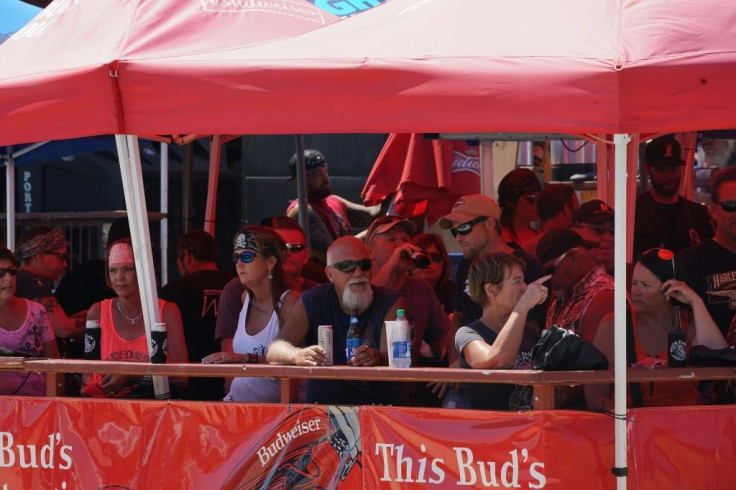Sturgis Rally May Have Led To 250,000 New US Coronavirus Cases, Study Estimates

KEY POINTS
- The Sturgis Motorcycle Rally in August might trigger 250,000 more COVID-19 infections, a new study estimates
- South Dakota saw a 126% increase in new COVID-19 cases in the two weeks after the Sturgis festival
- The total cost of these cases could incur a public health cost of more than $12 billion
The 80th Annual Sturgis Motorcycle Rally held in South Dakota last month -- the latest non-school COVID-19 superspreader event since Memorial Day -- might cause more than 250,000 new coronavirus cases and more than $12 billion in public health costs, a new study estimates.
The nonprofit IZA Institute of Labor Economics based in Bonn, Germany investigated the cost a superspreader event such as the Sturgis rally has on a public health system. Sturgis drew an estimated 462,000 persons over 10 days, according to the official traffic count from the South Dakota Department of Transportation (SDDOT).
South Dakota saw a 126% increase in new COVID-19 cases in the two weeks after the Sturgis festival, according to Reuters data. Neighboring states such as Iowa, Minnesota, Nebraska and North Dakota also reported an increase in new cases.
Apart from the estimated 250,000 new COVID-19 cases, Sturgis could cause upwards of $12.2 billion in public health costs. This total is based on an estimate each COVID-19 case will run up expenses amounting to $46,000.
“This is enough to have paid each of the estimated 462,182 rally attendees $26,553.64 not to attend,” stated the IZA study, which hasn't been verified by epidemiologists or public health officials.
IZA researchers said although these figures aren't fully accurate estimates of costs they do provide a ballpark figure and “a sense of how valuable restrictions on mass gatherings can be in this context.”
IZA researchers used mobile phone data to uncover foot traffic at bars, restaurants, and other venues in the Sturgis area. They then extrapolated a possible infection count based on increased infection rates after the end of the motorcycle rally. Mobile phone data also showed that 61% of U.S. counties had been visited by a Sturgis attendee as of Aug. 25.
The study said prolonged interactions between individuals at high frequencies accompanied by "minimal mask-wearing and social distancing by attendees" are the key reasons Sturgis was identified as a superspreader event. The synthetic control approach adopted by the study estimated the rate of new coronavirus cases at 19%, or 266,796.
Public health experts have identified several superspreader events this summer: the Memorial Day weekend starting May 25, the Fourth of July holiday weekend, the Sturgis rally starting Aug. 7, and the extended Labor Day weekend that ended Monday. They expect a similar surge in cases in the aftermath of Labor Day.
There were confirmed case spikes in Florida, Arizona, Oregon and other southern and western states after Memorial Day when state officials loosened lockdowns and social distancing measures. Similar spikes have been seen following other superspreader events.

© Copyright IBTimes 2025. All rights reserved.





















